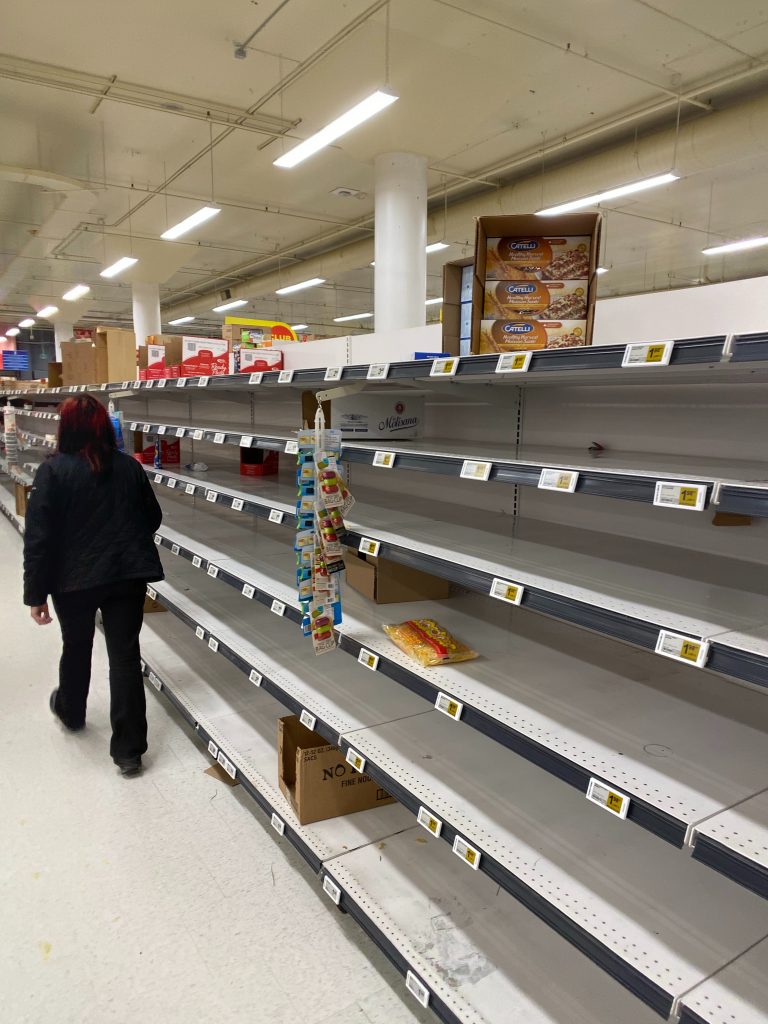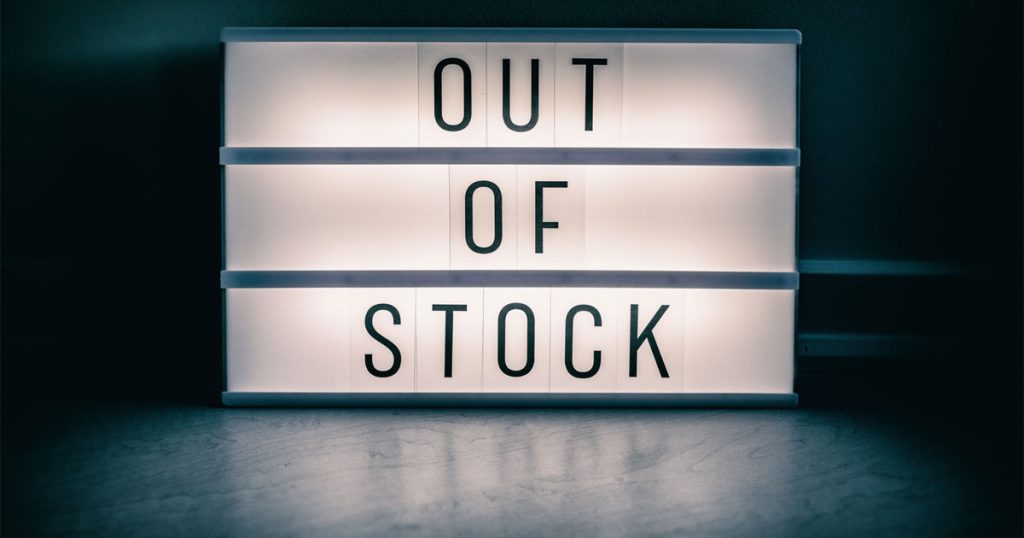Businesses are selling all kinds of stuff. Sometimes you stock out, sometimes you overstock, and then there are some items that you cannot stock at all (not for long at least). Backorders are a boon to businesses that manage ‘just enough’ stock. Many businesses find themselves backordering their products when they run out of stock. This is a very common practice and one that can be used to your advantage. However, backordering should not be done without careful consideration and planning. In this blog post, we will discuss what backorders are and how you can use them in your business!
Backordering Meaning
A backorder is when a customer purchases an item, but you do not have it in stock. A backorder occurs after the product has been sold and paid for by your customer. The order will then be sent to the manufacturer or supplier who will make more of that particular product available once they receive payment from you for this backordered amount. Backorders can sometimes take weeks or months before they are fulfilled, so it is important to consider all risks carefully before choosing whether backordering makes sense for your business!
When a product is backordered, it means waiting for the product to arrive or be made available by a supplier before you can complete your order. A backorder usually occurs when an item is out of stock at the time of purchase online. At this point, you should reach out to let your customer know that you’re unable to fill their order right away because the items are not in your warehouse yet and ask if they would like to backorder these items so they could ship together when they become available.
Backorders can be a great way of ensuring customer satisfaction and providing them with the products they like best – allowing time for backorder items before continuing on orders! But they must only be used carefully so as not to overstock or delay production unnecessarily. If backorders are being properly managed, these practices should have little effect on other areas of business operation.
A lot of times, people confuse between “what is backorder” and “out-of-stock”. Have you ever wondered what the difference between backorder and out-of-stock is? Well, let’s make it easy for all of us. Out Of Stock means that a product isn’t available with the retailer as of now and they don’t know when that item will be restocked again; while Backordered promises customers an estimated date on receiving their products. The term “Back Ordering” often confuses consumers because many times these items go into production before being ordered by retailers (which sends them through distribution).
What causes backorders?
One of the biggest causes for backorders is inaccurate inventory forecasting. Let’s take a look at some common reasons why this could happen and how you can prevent it in future shipments:

- Incorrect Delivery Estimate – If your company’s delivery estimate was off by 3 days or more than advertised, then that would be considered an over-fulfillment rate (percentage). To avoid missing deadlines due to unexpected delays with orders coming into stock on time when they were supposed to send them out again as soon as possible once everything has been restocked; make sure not only do all suppliers provide accurate lead times but also keep track of them yourself!
- Wrong Product Shipped – Sometimes products get shipped incorrectly from one order fulfillment center across different warehouses. This happens due to incorrect inventory data. Inaccurate inventory data is a massive issue for businesses. Their WMS or Inventory Management System tells them they have enough stock in their systems, but when physical inventories are checked the numbers don’t match up at all. A good Warehouse Management System (WMS) such as ZapInventory can be a great way to make sure you have an accurate inventory.
- Incorrectly forecasting – This means that you have too much on hand when it was expecting low quantities or not enough if orders came faster than anticipated; running out just as customers start looking is also an issue because there won’t be any products left over from previous periods which would normally replenish these shortages without further delay.
- Delay in order placement – The manual process of ordering inventory from a supplier or manufacturer can be inefficient, as it requires one person to review each order before sending out purchase orders. A better alternative is taking a data-driven approach where teams work together on reorders and make sure they have enough stock available at all times by reviewing historical trends with other departments like logistics who order what’s needed when it’s required most!
- Production shortage – This can happen when upstream partners don’t produce materials, or perhaps they’re having trouble getting their raw material needs. Downstream partners have little to no control over this backorder cause.
Become the master of backorders – Backorder Managing Tips
You have your dream of being the go-to company for all things, but backordering can be a huge problem for any business, so, it’s always good to know how your company handles backorders and what happens when you run out of stock. Backorders happen in every industry- from restaurants that have too many orders coming through their doors all at once; right down to small mom & pop bakeries who may find themselves ordering more than usual just so they don’t miss anything – even if this means having an item or two arrive months late because there weren’t enough people ahead on the line about its availability!

- Keep your customers in the know-how
You want to make the consumer aware even before a sale, and you do it by giving them an important part in buy-and-sell equations. This way, you are empowering your customers and giving them control of the buying process. If they want to buy a product from you but aren’t sure when it will arrive or how much shipping is going to cost then this new approach can help make their decision easier by letting them know as soon as possible if there’s any chance at all that something may go wrong with delivery timeframes.
A purchase order management software like ZapInventory can help you manage the backorders that accumulate and form a PO for your supplier. - Buffer your purchases
In a typical backordering process, you receive an order for an item that is not usually stocked and then raise a purchase order to get the product. But if there are more sale orders piling up until they reach certain minimum quantities before being raised on a daily or weekly basis with better bulk rates as well? Well let me tell ya – it can have some pretty sweet benefits! Since time is of the essence in a backordered item’s delivery and too many POs will drive your suppliers crazy, how about you reduce that as much as possible? I have found an easier way to manage it by allowing sales orders to pile up till certain quantities are reached before raising purchase orders. You might be surprised what kind of deal you can get just because they see more business coming through! - First In, First Out
You may have heard the saying “Don’t break the chain” or perhaps even seen a photo of an art installation with all these little chains hanging from it. Well, in business terms this means that each order should always be fulfilled in sequence and not out-of-order like what would happen if you were trying to fulfill orders at different speeds – which could lead to your company falling behind! Fulfill orders in the sequence that you received them. This way, you will be able to fulfill all previous and future orders so they are evenly distributed across time periods. - Just In Time
Companies are increasingly finding new ways to avoid the risk of backorders and supply chain interruptions. One such method is “Just-In-Time” (JIT). JIT production allows companies to keep their output levels high while avoiding waste from unnecessary costs or inventory that will lead them down a path towards diminished profits in contrast with other methods like traditional planning. The JIT technique reduces the amount of time it takes to produce a product by allowing standardization, which in turn produces less and/or better quality for producers. This ultimately results in meeting their sales targets or projections much more easily than before when producing products through an old manufacturing process. - Reduce backorders
While backorders work great when moderated carefully, a business should not entirely depend just on this. Some ways in which you can reduce backorders are:
- Setting aside a certain amount of stock i.e. Safe Stock, in order to cover unusual demand
- Add up all your lead time and safety stock in days and set a reorder point i.e. is the minimum quantity of any SKU that a business should have on hand before they need to get more products from their manufacturer
- Popular items are always in high demand, which means that they may sell out quickly. View inventory of popular items regularly to keep a check on them
- Working with multiple suppliers is a great way to be prepared for the unexpected. Having backup options helps ensure that you can produce what people need no matter what happens!
Are there any benefits of backorders?
- Zero working capital
- Reduces storage space & cost
- Creates a hype amongst buyers
- Increases flexibility
- Reduces logistical expenses
- Improves product’s perceived value
- Insights into customers’ buying patterns
- Reduces cost and risk of overstocking
Should you accept backorders?
What if I told you that backordering is a common practice in manufacturing companies? What would happen then, sure shipping may be slower than expected but the product will still come. It can save you from having unhappy customers and even turn into an opportunity for more sales with people who wanted it earlier!
A lot goes down behind closed doors when we order something off of Amazon or Etsy before they are actually produced; however, there might not always exist enough inventory so what do stores usually resort to – putting out preorders while also making them available through other channels like global e-commerce sites where one country’s demand could potentially affect another’s due to their different purchasing behaviour trends.

If you’re an eCommerce store owner, it may be difficult to manage how many orders come in and what products are available. You might not always have all the right inventory on hand for each customer who visits your site at any given time – but that shouldn’t stop people from placing their orders! With backorders being such a common practice among manufacturers with make-to-order systems or those managing just-in-time inventories, processing these requests makes perfect sense as long as there is enough product ready ahead of demand (and thus lowering costs).
There are two ways to handle backordering. One is that you have a few orders in the backlog and short turnaround times, which means your inventory management is efficient because it can handle more than just a couple of deliveries at once. The other option would be if there’s an unchecked list of items waiting for customers with no hope or expectation on when they’ll receive their product again; this could mean some issues regarding storage space allocation as well since not all areas need stockpiles worth taking up a room over others—this might also lead into issues determining how much raw material was used before sold out so availability needs checking too.
Backorder management is one of the most important aspects for companies who want their business to succeed. A company that handles its backordering well will be able to manage inventory effectively and efficiently, which in turn saves them money by not having too much or unnecessary clutter on hand when customers are ready to make purchases from you! A good sign if your operation has high fulfilment rates – meaning they’ve been able to deal quickly with any problems – but also low wait times: there should never be more than 1-3 days between orders being filled so people can’t even tell where things were delivered.
Backordering as a part of Inventory management
Inventory management is a process that helps companies manage their inventory of products effectively. It also needs to be considered when using backordering strategies. For example, many businesses find themselves backordering their products when they run out of stock, this often occurs with perishable goods such as fruits and vegetables. Companies must keep track of what items they have backordered or kept on hold before backordering anything else to ensure there are no issues with excess (back)orders which can tie up capital and affect other areas of business operation!
Having too much backstock will cause problems with your inventory management and may leave you with a lack of inventory during peak periods, which is why it must be handled carefully. Further, backordering can be used by businesses who sell their goods even though they do not physically have them available at the time of purchase!
We hope that this blog post has helped define back order and what it means for companies who are selling without having the backordered products in stock! ZapInventory is an integrated, multi-channel inventory management software for businesses of different sizes, especially eCommerce businesses to help them manage their inventory across all their sales channels. It’s got some super cool features like order management, warehouse management, purchase order management, accounting & invoicing, and reports & analytics. They also offer a FREE trial of the platform, and if you’d like some additional help in getting to know the platform, just schedule a call here.
Happy selling!
 Start using ZapInventory today
Start using ZapInventory today
